Easy Gnocchi Bolognese – Authentic Italian Recipe
This Gnocchi Bolognese recipe combines two amazing Italian classics: pillowy gnocchi and slow-cooked ragú. Although bolognese is typically served with pappardelle pasta in Italy, I decided to modernize the dish by serving it with potato gnocchi. This dish is the ultimate comfort food – you’ll make it over and over again, and it is the perfect Sunday night dinner. Leftover bolognese sauce is just as delicious the next day for lunchtime leftovers, too! If you’re a fan of Italian classics, try my Carbonara recipe.
My take on gnocchi bolognese includes a traditional Italian approach to ragú alla bolognese — that means there are absolutely no crushed tomatoes or tomato purée (except for tomato paste), or heavy cream in this recipe. I know this might be controversial here in America, but I am right. I have traveled to Italy 5 times and have been to Bologna, the country’s culinary heart, many times. I’ve eaten bolognese in bologna and even took a cooking class to learn how to master this sauce the Italian way. Trust me, if you want to transport yourself to Italy.. try this recipe!
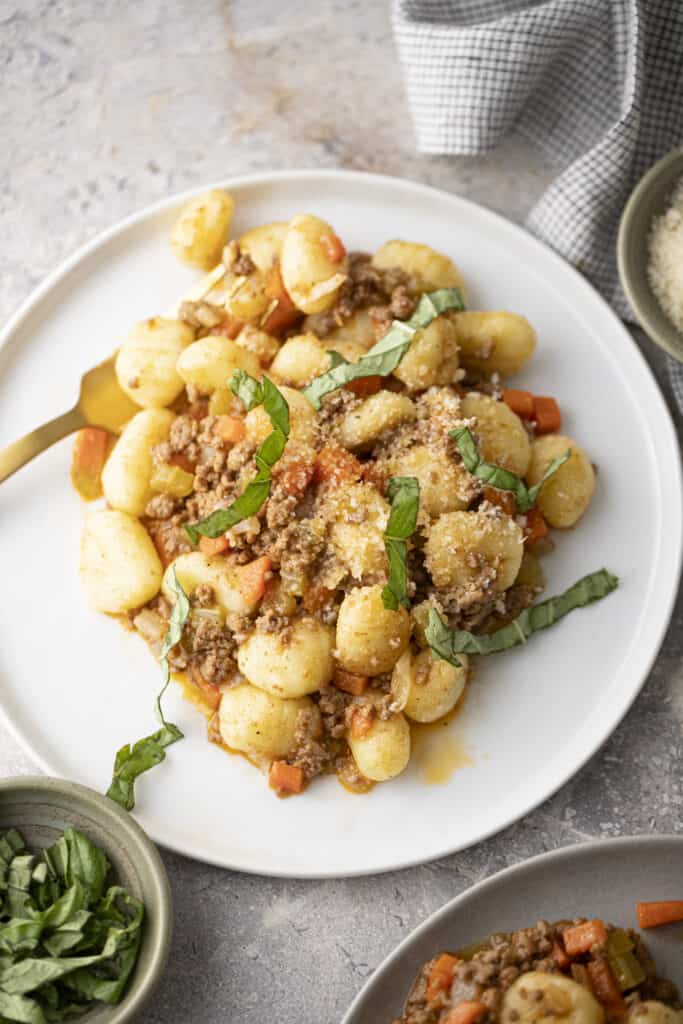
This gnocchi bolognese recipe is one of our favorite’s in my home. I learned how to make this ragú in Italy under the instruction of a chef, and it’s been one of my favorite ways to enjoy pasta ever since. Although this traditional bolognese sauce takes a longer time to cook, the results are worth it! If you make this recipe, please leave me a review and a star rating after the printable recipe card.
Table of contents
- where does bolognese sauce come from?
- why you’ll love this gnocchi bolognese recipe
- what ingredients do you need to make gnocchi bolognese?
- substitutions and additions
- what is Italian soffritto?
- how do I make gnocchi bolognese?
- tips and tricks for making gnocchi bolognese
- faq
- serving suggestions for gnocchi bolognese
- storage and reheating instructions for gnocchi bolognese
where does bolognese sauce come from?
Bolognese sauce, or Ragu alla Bolognese, traces its origins to the culinary heart of Italy, Bologna. This iconic sauce has deep-rooted traditions dating back centuries, with early recipes documented as far back as the 18th century. Renowned for its simplicity and rich flavors, bolognese sauce typically features finely minced meat, such as beef or pork, cooked slowly to perfection. Aromatic vegetables, including onions, carrots, and celery, contribute to the sauce’s distinctive taste. Unlike many tomato-based sauces, bolognese takes a unique approach, often incorporating a small amount of tomato paste for depth rather than relying heavily on tomatoes. The slow-simmered, hearty nature of bolognese sauce has made it a beloved and enduring component of Italian cuisine, evolving over time to become a global culinary sensation.
why you’ll love this gnocchi bolognese recipe
- Minimal active cooking – This slow-cooked bolognese meat sauce involves some quick prep before you let it simmer on the stove to deepen the flavor. Less hands-on time means more time to spend with your guests!
- Italian classic – Who doesn’t love Italian food? This will be one of your new favorite meals. Hearty bolognese sauce is flavorful, rich, and filling. The dish will transport you to Italy, and you will appreciate the genuine taste of a traditional Italian dish made in the comfort of your kitchen.
- It’s simple – My authentic recipe offers a delicious twist (pillowy gnocchi) on the classic bolognese sauce, known for its savory and hearty flavors. The simplicity of the dish makes it approachable for both novice and experienced cooks.
- Versatile and adaptable – My recipe offers room for personalization, allowing readers to adapt it to their preferences. Whether you choose to add extra herbs, cheese, or other favorite ingredients, the versatility of the dish makes it adaptable to individual tastes.
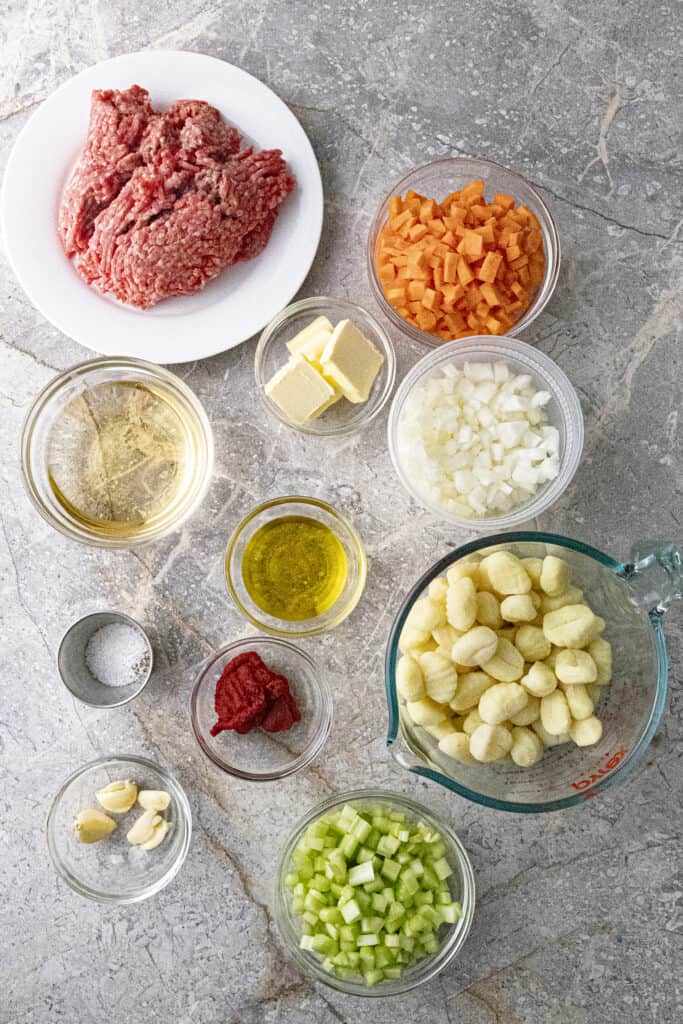
what ingredients do you need to make gnocchi bolognese?
- Potato gnocchi – These soft and pillowy potato dumplings add a delightful texture to the dish, absorbing the savory Bolognese sauce for a comforting eating experience. Feel free to use homemade gnocchi or store-bought!
- Olive oil – The rich and fruity notes of olive oil contribute a smooth and flavorful base, enhancing the overall taste and mouthfeel of the Gnocchi Bolognese.
- Butter – A touch of butter adds richness to the sauce. This creates a velvety texture that complements the hearty flavors of the ground beef.
- Garlic – The aromatic essence of garlic infuses the dish with a savory depth, enhancing the overall flavor profile and bringing a classic Italian touch. It’s important to smash the garlic instead of mincing it.. We don’t want the garlic to overpower the dish. Instead, it should help add some balance.
- Onion, celery, and carrot (soffritto mixture) – This trio forms the foundation of the Bolognese sauce, providing a harmonious blend of sweetness and aromatic goodness that defines the dish.
- Tomato paste – A dollop of tomato paste contributes a concentrated burst of umami and depth, intensifying the sauce’s flavor.
- Ground beef – The hearty and savory ground meat is a star ingredient, offering a robust meatiness that pairs perfectly with the Gnocchi and balances the overall dish.
- White wine – Adding a splash of white wine brings a touch of acidity and brightness, elevating the flavors and creating a nuanced complexity in the sauce. Wine helps to deglaze the bottom of the pan so that any brown bits can be incorporated in the meat sauce. Make sure to use a dry white wine, like Pinot Grigio. Some people use dry red wine for a hearty bolognese sauce, but I much prefer white wine for this application.
- Water – Adding a small cup of water allows the sauce to loosen up a bit.
- Salt – A pinch of kosher salt enhances the overall seasoning, ensuring each dish element is perfectly balanced.
- Pepper – Ground pepper adds a subtle kick and layers of warmth, contributing to the well-rounded and comforting taste of the Gnocchi Bolognese.
substitutions and additions
- Use a potato gnocchi alternative – You can substitute with cauliflower gnocchi or gluten-free gnocchi for dietary preferences. Or, use sweet potato gnocchi for a slightly sweeter flavor.
- Switch up the ground meat – Not in the mood for ground beef, or maybe the grocery store is out of stock? Substitute with ground turkey, chicken, or plant-based ground for a leaner option for this meaty sauce. You can also experiment with a mix of ground meats like pork or veal for variety. I LOVE to use a trio of 1/3 pound ground beef, 1/3 pound ground pork, and 1/3 pound ground veal.
- Skip the alcohol – Use vegetable or chicken broth as a non-alcoholic alternative. You can also use extra water.
- Add fresh herbs or Italian seasoning – Add some fresh basil to the dish for a vibrant touch or some dried Italian seasoning for added flavor.
- Make it spicy – If you like some heat, add red pepper flakes to make this sauce a bit spicier.
what is Italian soffritto?
Soffritto is at the heart of traditional Italian cooking – it’s a versatile flavor blend that adds a kick to many dishes. Hailing from Italy, soffritto is a mix of finely chopped onions, carrots, and celery, sautéed to perfection. This simple trio of veggies forms the flavor base for a variety of Italian recipes, from sauces to stews. The balanced combination brings a fragrant and savory kick to your dishes, adding an authentic Italian touch to your cooking.
Italian soffritto, a flavorful mix of finely chopped onions, carrots, and celery sautéed to perfection, is a versatile base that enhances numerous dishes in Italian cuisine. Here are some classic dishes that prominently feature Italian soffrito:
- Bolognese sauce – The soffritto mixture is a key component in the rich and savory Bolognese sauce, adding depth and aroma to this classic Italian meat sauce.
- Minestrone soup – The aromatic mix of soffritto provides a flavorful foundation for hearty Minestrone soup, complementing the medley of vegetables and beans.
- Osso buco – In this Milanese specialty, soffrito forms the base for the braising liquid, infusing the dish with a savory complexity as it cooks with veal shanks.
- Risotto – The soffritto mixture is often used at the beginning of preparing risotto, contributing a flavorful start to this beloved Italian rice dish.
- Sauces and gravies – Soffrito serves as a base for various sauces and gravies, adding depth and richness to dishes like chicken cacciatore or pot roast.
- Stews and braises – It’s a fundamental component in many stews and braised dishes, enhancing the overall flavor profile in dishes such as beef stew or braised chicken.
- Pasta sauces – Soffritto is a key ingredient in various pasta sauces, providing a robust and aromatic foundation for dishes like ragu, puttanesca, or arrabbiata.
- Vegetarian dishes – Even in vegetarian dishes like ratatouille, soffritto can be used to impart a savory flavor to the medley of vegetables.
These are just a few examples, and the versatility of Italian soffrito makes it a go-to element in a wide range of Italian recipes.
how do I make gnocchi bolognese?
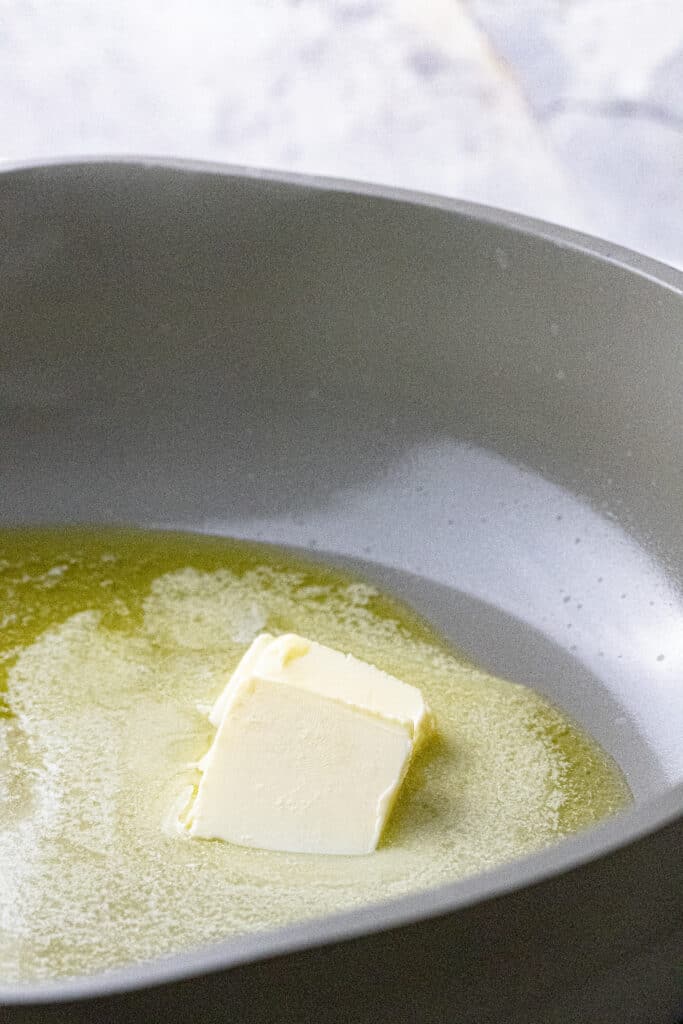
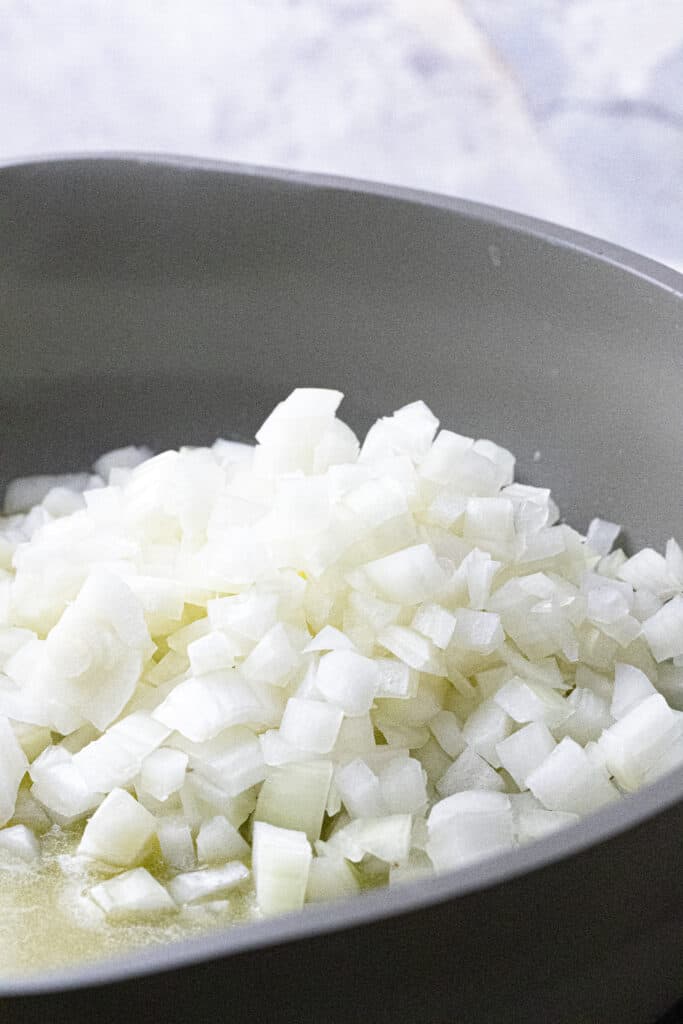
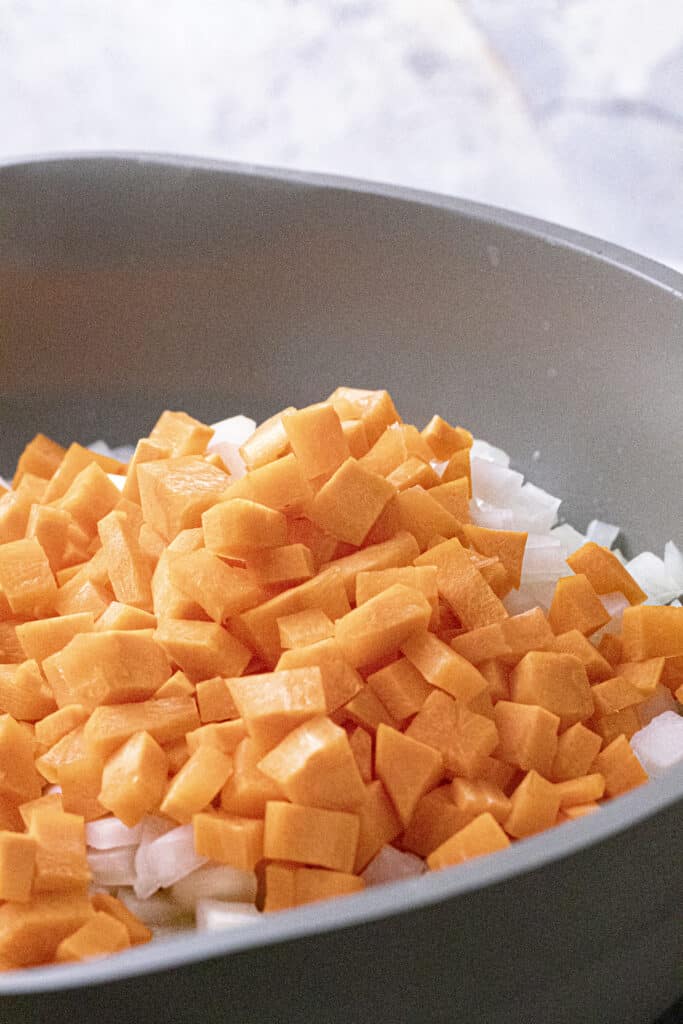
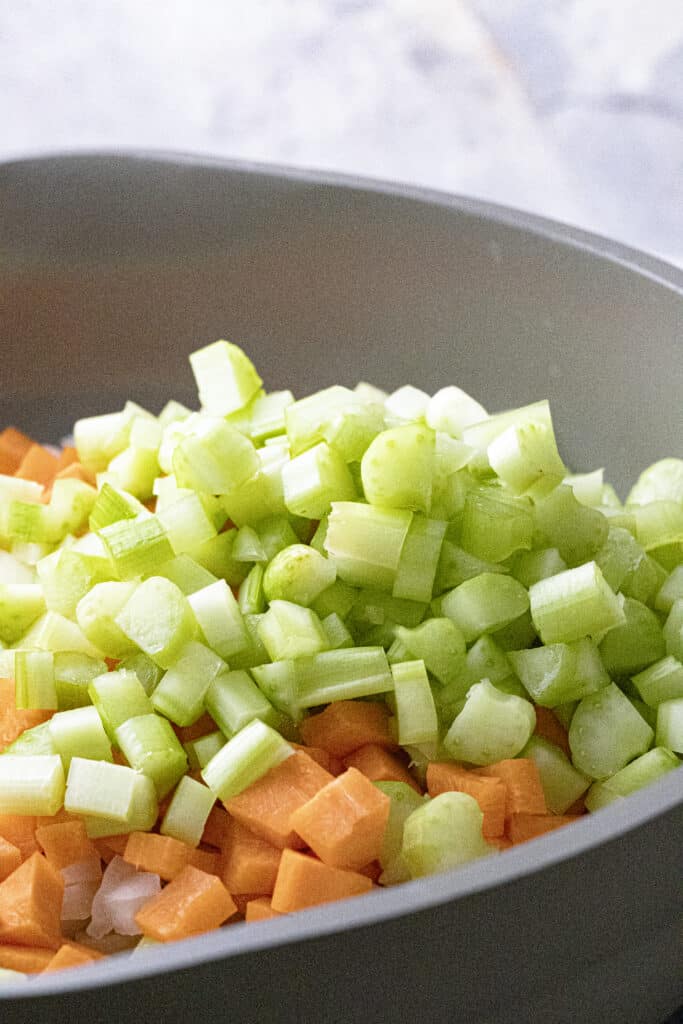
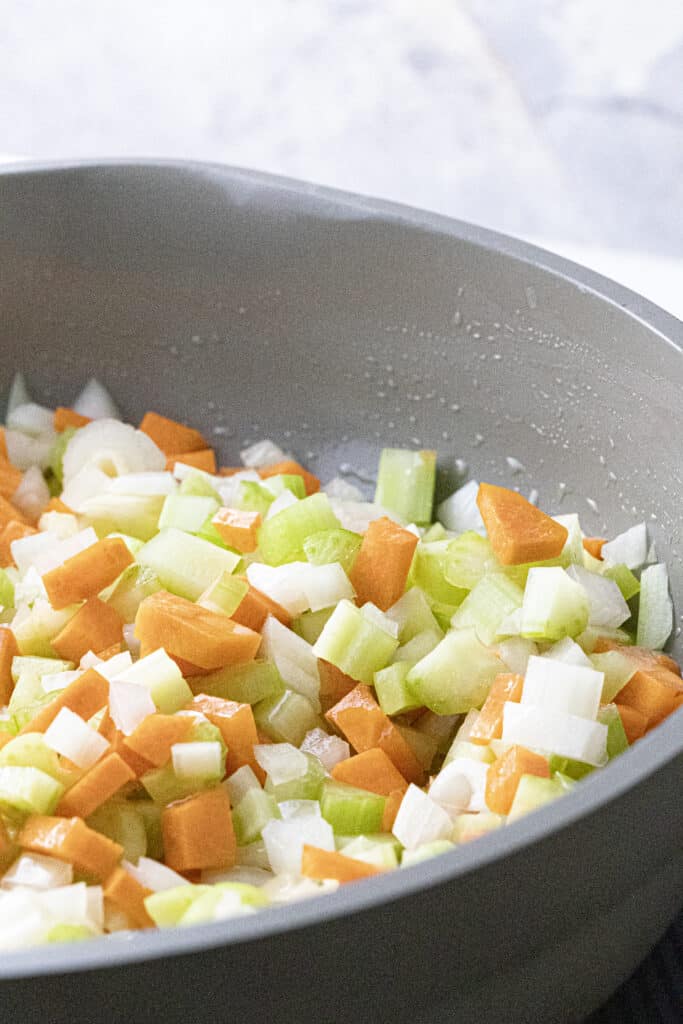
In a heavy-bottomed pan or dutch oven, heat olive oil and butter. Stir in the onion, cover, and cook over medium-low heat for 5-10 minutes until the onion turns translucent. Stir occasionally.
Add celery and carrot, cover, and cook for an additional 5-10 minutes until vegetables are soft and slightly browned. Stir in garlic, if using, and cook for an extra minute.
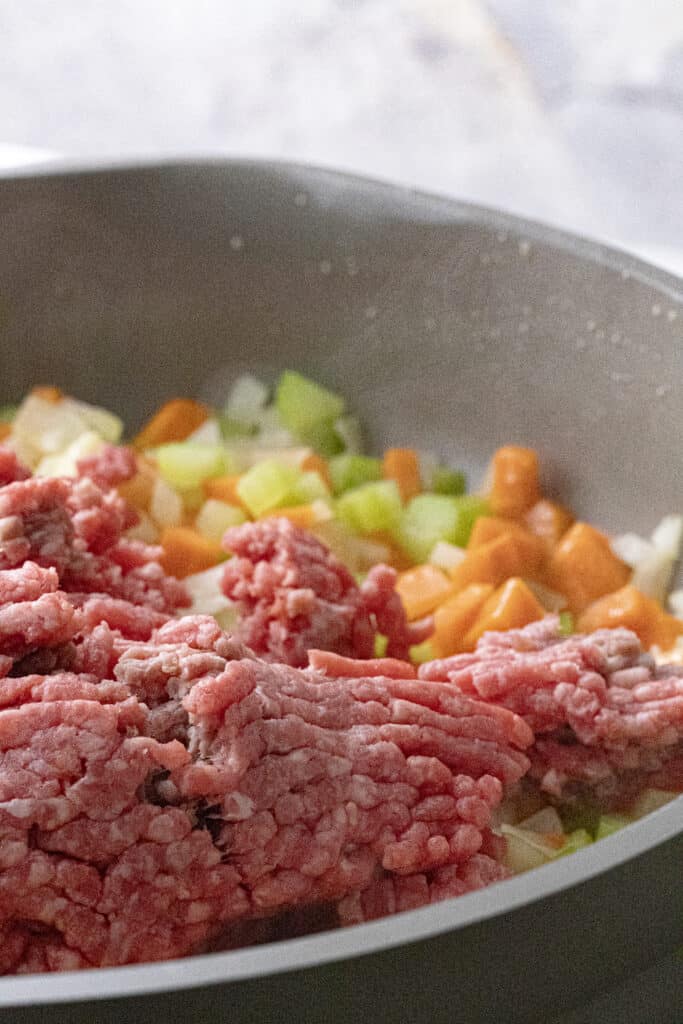
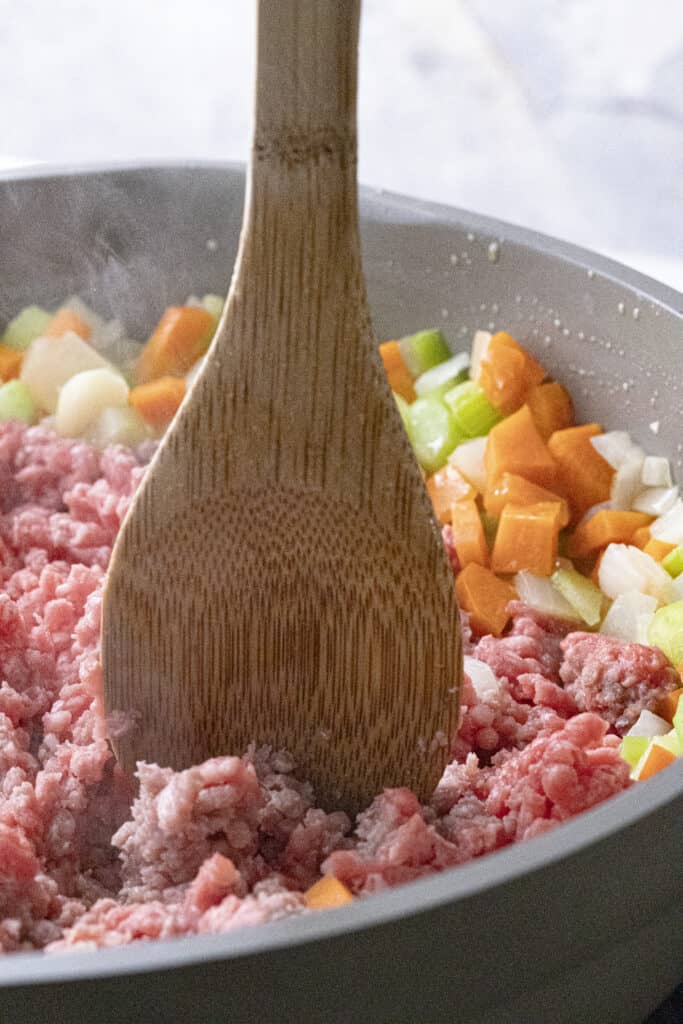
Add ground beef, breaking it into small pieces with a wooden spoon. Increase heat to medium-high and cook for about 10 minutes until the meat loses its red color.
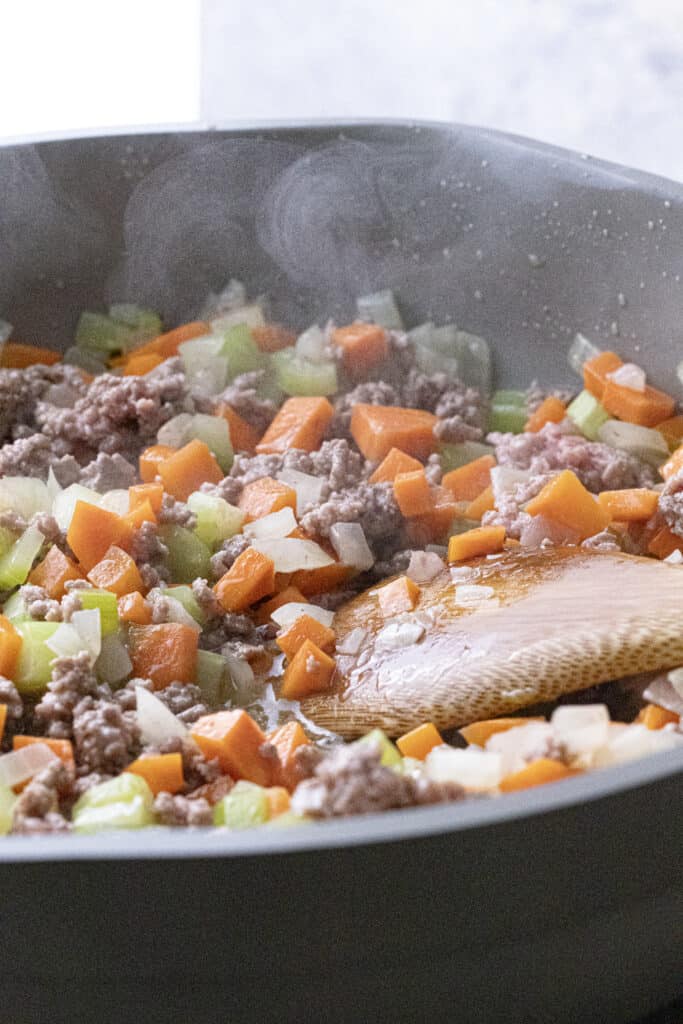
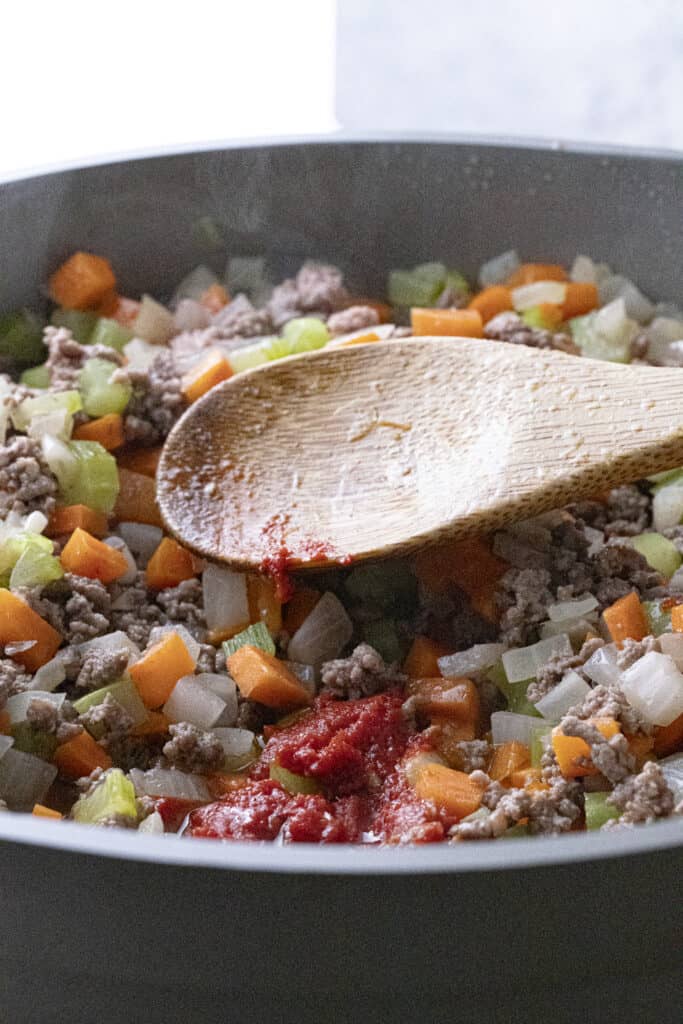
Stir in tomato paste, cooking until its color deepens to a rich, brick red, about another minute.
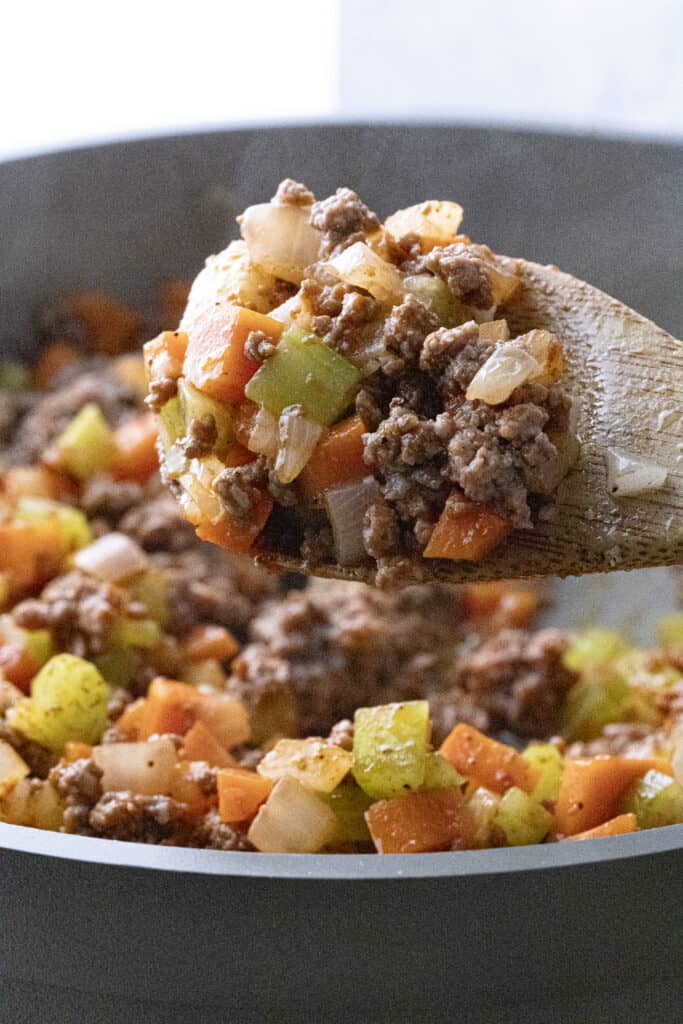
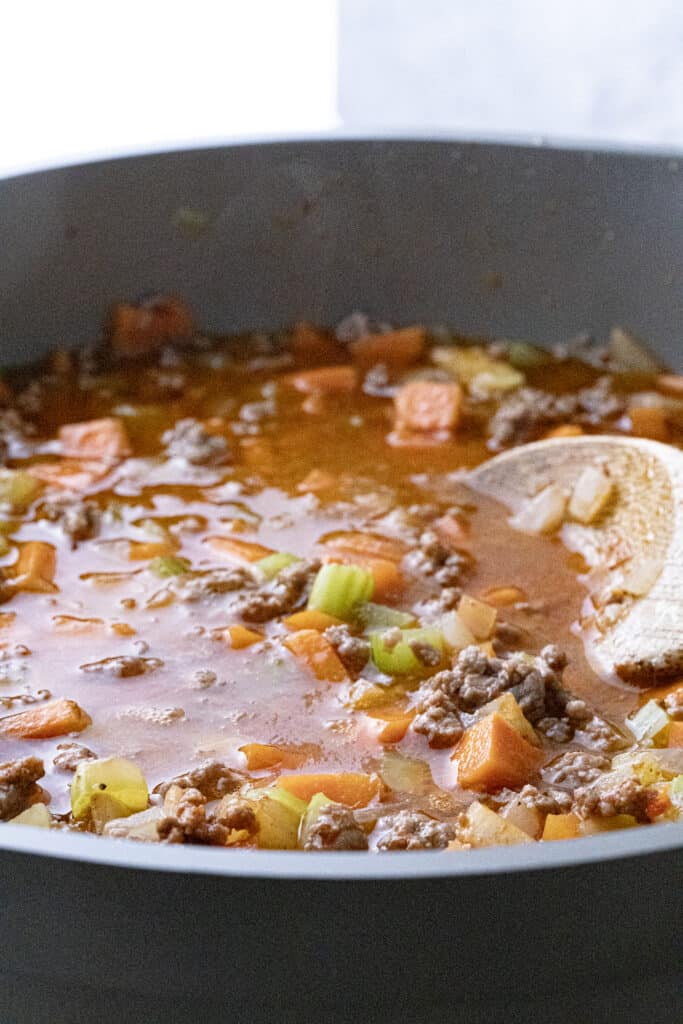
Pour in white wine (3/4 to 1 cup) and water (3/4 to 1 cup OR just under 2 cups if you are not using wine). Season with salt and pepper, then reduce heat to low. Cover and simmer for 1½ hours, adding ½ cup water if the sauce dries.
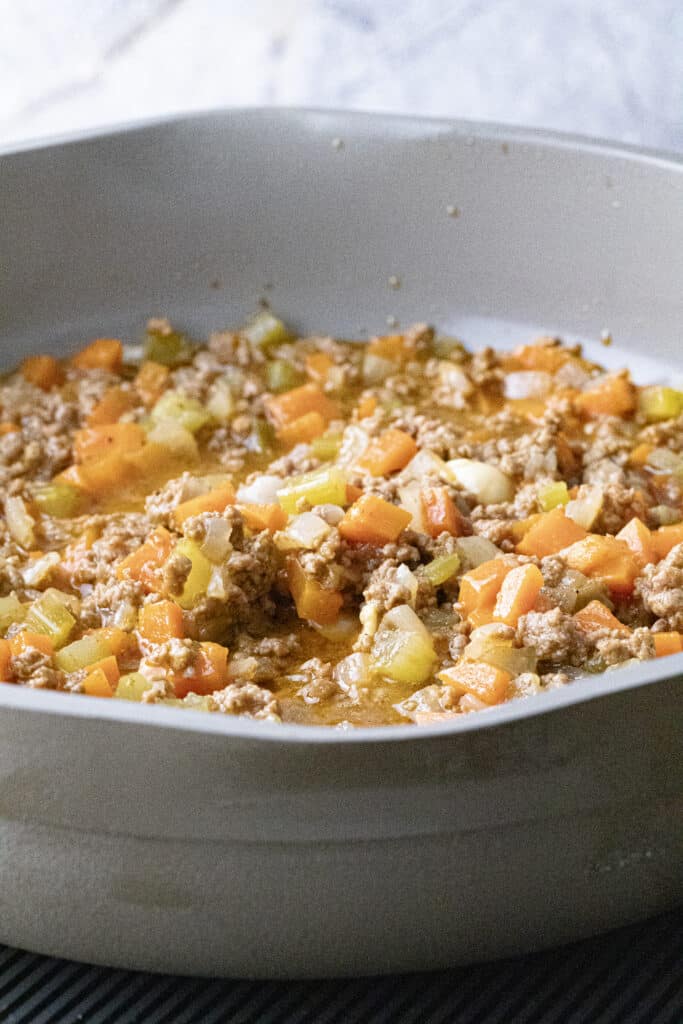
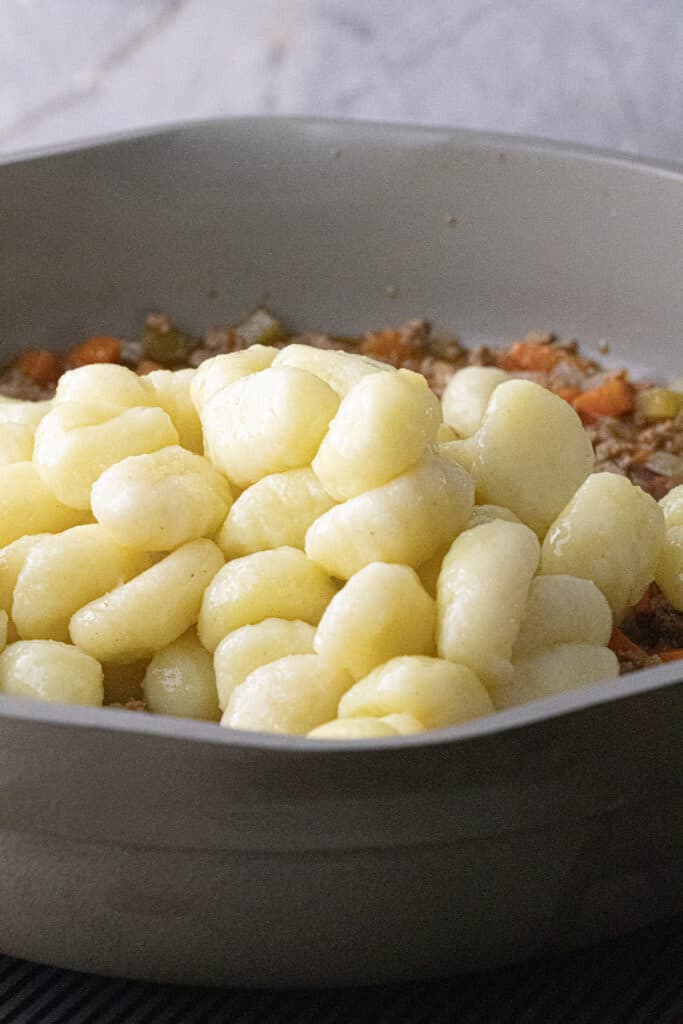
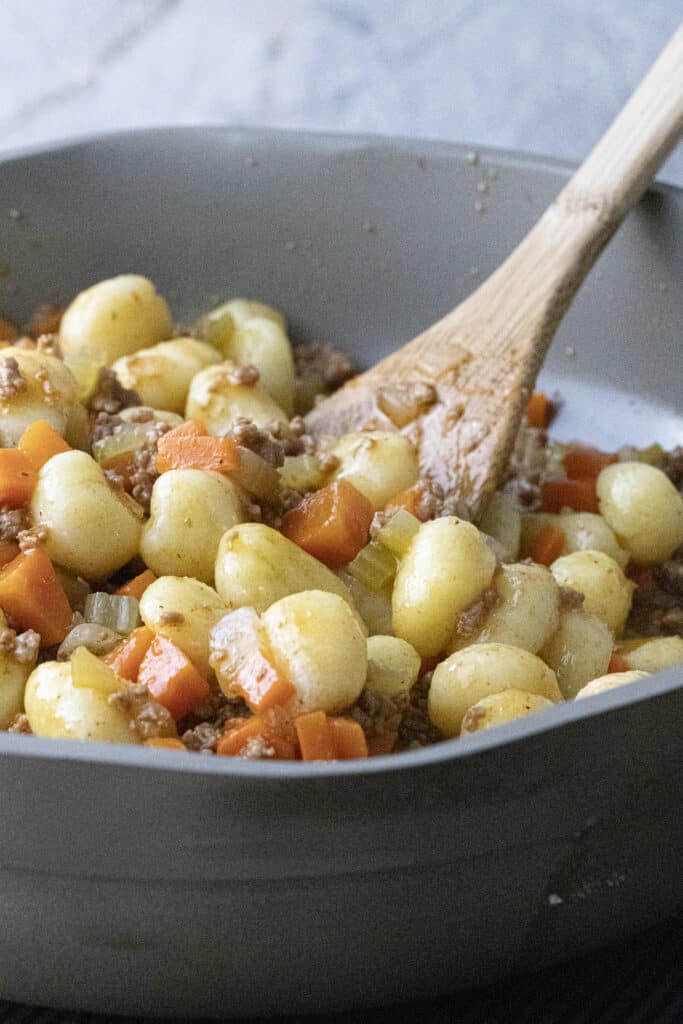
Once done, boil 1 pound of gnocchi until they float (2-4 minutes), drain, and toss with bolognese sauce. Top with freshly grated Parmigiano Reggiano and serve. Enjoy!
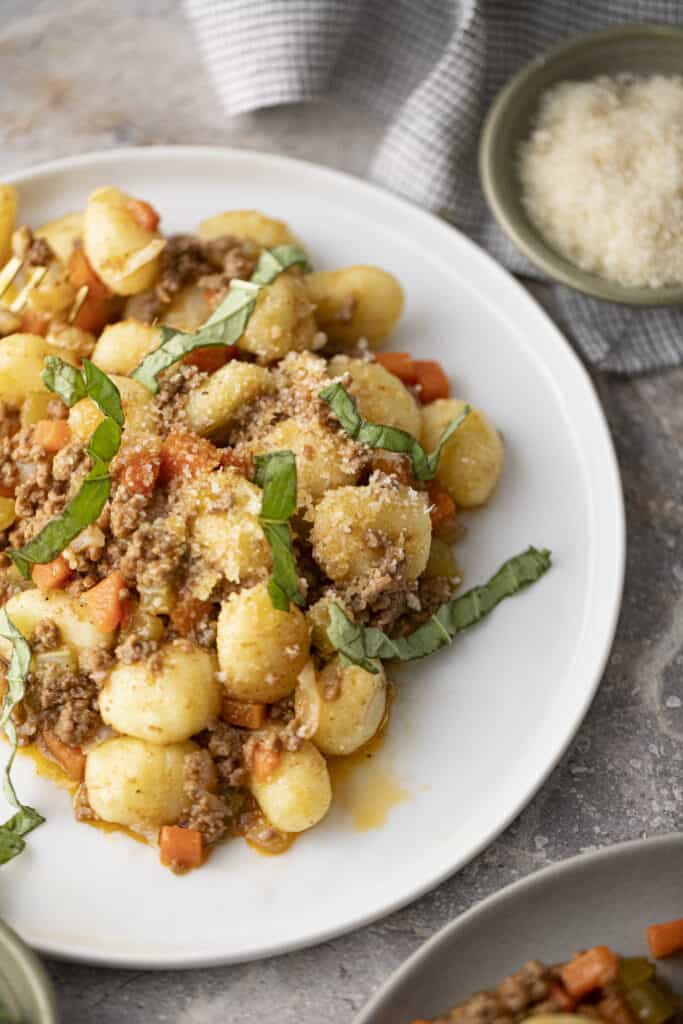
tips and tricks for making gnocchi bolognese
- Perfect gnocchi – Boil the gnocchi until they float to the surface, indicating they are cooked. Drizzle olive oil over them after draining to prevent them from sticking together.
- Browning ground meat – Allow the ground beef to brown thoroughly to develop rich flavors. Break it into smaller pieces with a spatula for an even cook.
- Soffrito technique – Ensure the onion, celery, and carrot (soffrito) are finely diced for a well-integrated flavor base. Sauté them until softened but not overly browned.
- Tomato paste depth – Let the tomato paste cook for a minute or two before adding other liquids. This intensifies its flavor and removes any raw taste.
- Seasoning layers – Season in layers. Add salt and pepper gradually, tasting as you go. This ensures a well-balanced dish without over-salting.
- Cheese garnish – Finish the dish with freshly grated Parmesan or Pecorino cheese for a delightful savory kick.
- A note about garlic – I LOVE garlic. I’m one of those people who will add extra garlic to any recipe.. but NOT this one. Garlic is not the star of the show in this recipe on purpose. Don’t add too much extra garlic, and do not mince it.
faq
- Can I use store-bought gnocchi for this recipe? – Absolutely! Store-bought gnocchi works well and saves time. Follow the package instructions for cooking.
- Can I make this recipe gluten-free? – Absolutely! Use gluten-free gnocchi and ensure other ingredients like broth and tomato products are gluten-free.
- How do I prevent gnocchi from sticking together? – After boiling the gnocchi, drizzle with olive oil to prevent sticking. Toss gently to coat.
- Can I make this dish ahead of time? – Yes, Gnocchi Bolognese is a great make-ahead dish. Prepare the sauce in advance and reheat when ready to serve. Cook the gnocchi just before serving for the best texture.
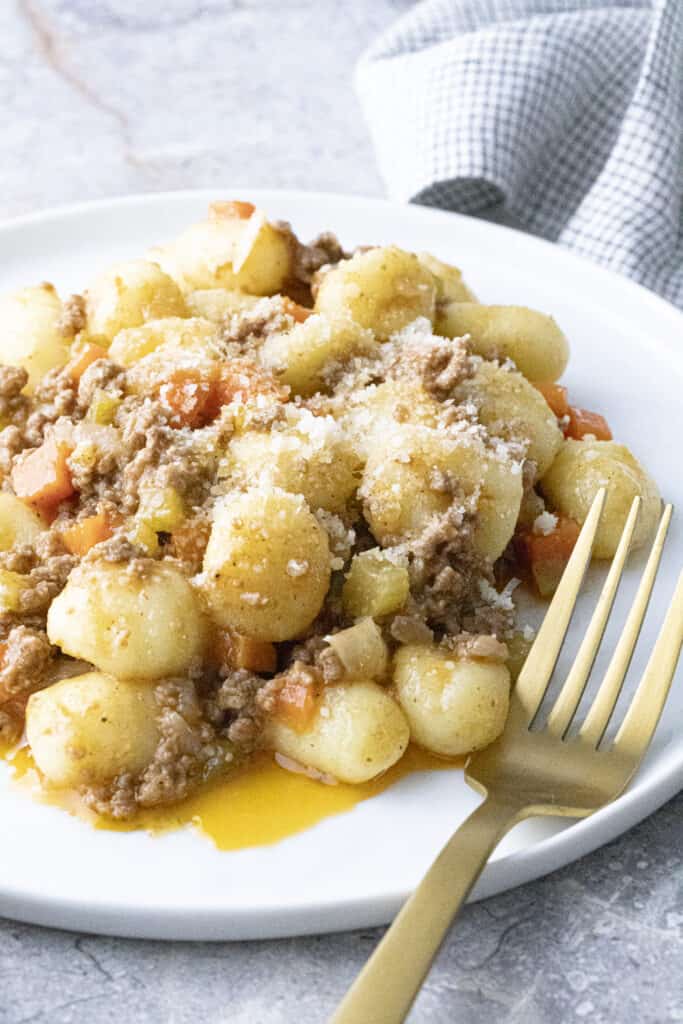
serving suggestions for gnocchi bolognese
- Wine pairing – There are three wines I suggest pairing with this dish. The first is Chianti Classico, a medium-bodied Tuscan red wine with bright acidity and red fruit notes. The second is my favorite, Barolo, a full-bodied red wine with robust tannins, complex aromas, and dark fruit and earth flavors. Barolo is from the Piedmont region of Italy. The last option is my husband’s favorite, Brunello di Montalcino, another Tuscan wine full-bodied with rich cherry and plum flavors, along with hints of leather and spice.
- Fresh garnish – Sprinkle freshly chopped parsley or basil on top for a burst of color and added freshness.
- Grated parmigiano reggiano or pecorino: Offer grated parmigiano reggiano or pecorino cheese at the table, allowing each diner to customize their dish with a generous sprinkle.
- Crusty bread or garlic bread – Serve with crusty Italian bread or garlic bread to mop up the savory sauce.
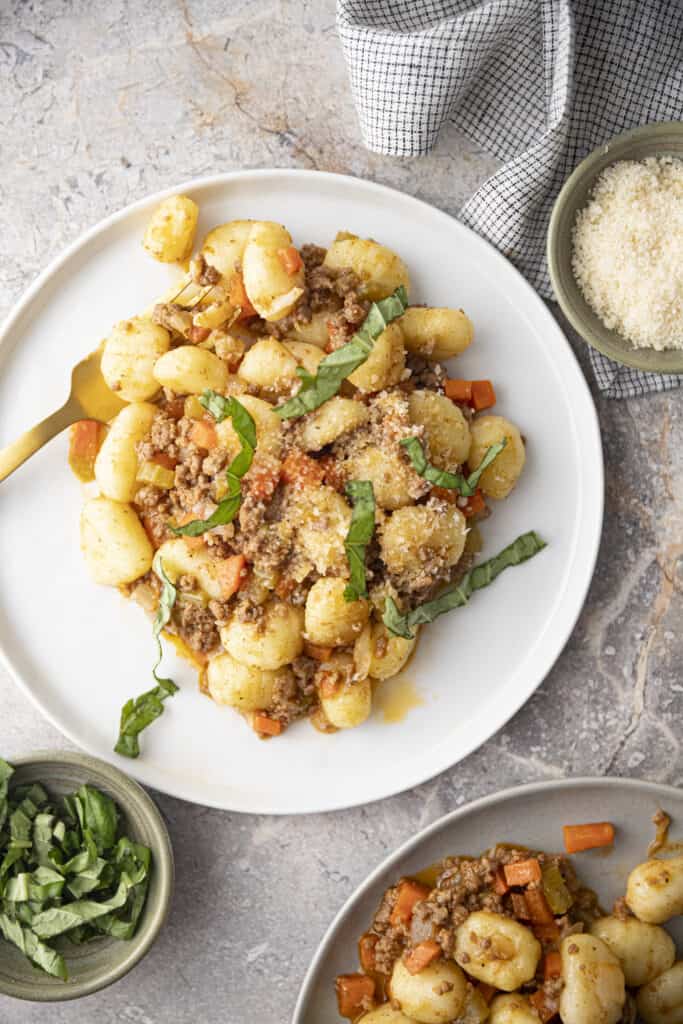
storage and reheating instructions for gnocchi bolognese
Following these storage and reheating tips means you can enjoy the delicious flavors of Gnocchi Bolognese even after storing it.
Storage
- Refrigeration – Allow any leftover Gnocchi Bolognese to cool to room temperature before refrigerating.
- Airtight container – Transfer the dish to an airtight container to maintain freshness and prevent odors from affecting the flavor.
- Label and date – For easy identification, label the container with the date of preparation.
- Storage Duration – Consume refrigerated leftovers within 3-4 days for optimal freshness. If freezing, store in a freezer-safe container for 1-2 months. Thaw in the refrigerator before reheating.
Stovetop Reheating
Reheat Gnocchi Bolognese on the stovetop for optimal results. Place it in a saucepan over low to medium heat.
- Add liquid – To prevent the sauce from drying, add a splash of water, broth, or wine while reheating. Stir occasionally.
- Gentle heat – Heat the dish gently, ensuring even warming throughout. Avoid high heat to prevent overcooking.
- Cover the pan – Consider covering the pan with a lid or foil to trap moisture and maintain the sauce’s consistency.
- Check gnocchi texture – If the gnocchi seems a bit dry after reheating, add a touch of olive oil or butter to restore moisture.
Note: Gnocchi can absorb liquid, so the consistency may change slightly upon reheating. Adjust the texture by adding a bit of liquid as needed.
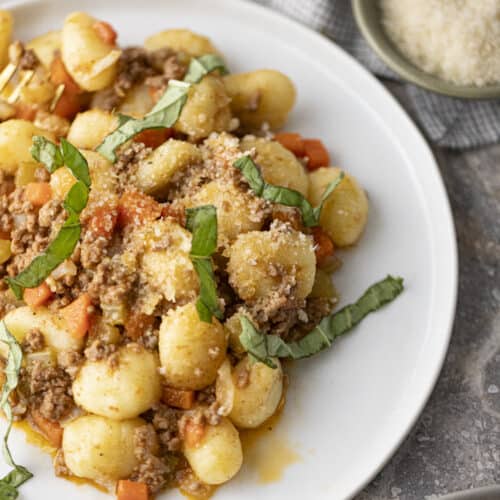
Easy Gnocchi Bolognese – Authentic Italian Recipe
Equipment
- measuring cups
- measuring spoons
- Knife
- cutting board
- heavy-bottomed pot or dutch oven
- pot
- wooden spoon
- Colander
Ingredients
- 1 pound potato gnocchi
- 16 ounces ground beef
- 1 cup finely diced celery
- 1 cup finely diced carrot
- 1.5 cups finely diced yellow onion
- 3 cloves of garlic crushed
- 3.5 tablespoons olive oil
- 3.5 tablespoons unsalted butter
- 2 tablespoons double-concentrated tomato paste
- 1/2 teaspoon freshly ground pepper
- 1 teaspoon salt
- 1 cup dry white wine (scant – just under 1 cup)
- 1 cup water (scant – just under 1 cup)
Instructions
- In a heavy-bottomed pan or dutch oven, heat olive oil and butter. Stir in the onion, cover, and cook over medium-low heat for 5-10 minutes until the onion turns translucent. Stir occasionally.
- Add celery and carrot, cover, and cook for an additional 5-10 minutes until vegetables are soft and slightly browned. Stir in garlic, if using, and cook for an extra minute.
- Add ground beef, breaking it into small pieces with a wooden spoon. Increase heat to medium-high and cook for about 10 minutes until the meat loses its red color.
- Stir in tomato paste, cooking until its color deepens to a rich, brick red, about another minute.
- Pour in white wine (3/4 to 1 cup) and water (3/4 to 1 cup OR just under 2 cups if you are not using wine). Season with salt and pepper, then reduce heat to low. Cover and simmer for 1½ hours, adding ½ cup water if the sauce dries.
- Once done, boil 1 pound of gnocchi until they float (2-4 minutes), drain, and toss with bolognese sauce. Top with freshly grated Parmigiano Reggiano and serve. Enjoy!
Notes
- Perfect gnocchi – Boil the gnocchi until they float to the surface, indicating they are cooked. Drizzle olive oil over them after draining to prevent them from sticking together.
- Browning ground meat – Allow the ground beef to brown thoroughly to develop rich flavors. Break it into smaller pieces with a spatula for an even cook.
- Soffrito technique – Ensure the onion, celery, and carrot (soffrito) are finely diced for a well-integrated flavor base. Sauté them until softened but not overly browned.


I made this recipe and it was fabulous! What an easy recipe to follow and whip up!